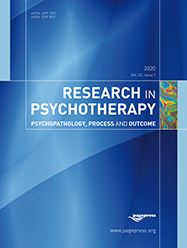A systematic review of patient-therapist synchrony as an indicator of emotion regulation in psychotherapy: an integrated approach
Patient-therapist synchrony and emotion regulation
All claims expressed in this article are solely those of the authors and do not necessarily represent those of their affiliated organizations, or those of the publisher, the editors and the reviewers. Any product that may be evaluated in this article or claim that may be made by its manufacturer is not guaranteed or endorsed by the publisher.
Authors
Interpersonal synchrony is increasingly being studied in the context of psychotherapy. The Interpersonal Synchrony (In-Sync) model proposes that patient-therapist synchrony enhances working alliance by promoting emotion regulation (ER). While the link between synchrony and working alliance has been extensively described, its relation to ER in the clinical setting remains underexplored. The present systematic review, therefore, aimed to address this gap by providing a qualitative synthesis of the methods employed and the results reported by studies investigating the relationship between patient-therapist synchrony and ER. A comprehensive search yielded seven studies (out of an initial 2,094), published between 2007 and 2024, encompassing 828 participants (563 patients and 265 therapists). Despite finding highly heterogeneous conceptual frameworks and methodologies employed to assess both synchrony (e.g., motion energy analysis [MEA], electrocardiogram, skin conductance) and ER (e.g., self-report questionnaires and behavioral coding systems), the studies’ results revealed a predominantly positive association between synchrony and ER, with in-phase synchrony linked to improved emotional stability and positive emotional experiences. Nonetheless, two studies presented contrasting results, either suggesting a more complex dynamic of co-regulation or finding no direct relationship between nonverbal synchrony and emotional self-regulation. Additionally, a notable research gap was revealed regarding older adults, as no studies included participants over 61 years. Overall, this systematic review highlights the lack of standardized methods and conceptual ambiguity surrounding ER, ultimately limiting cross-study comparability, as well as emphasizing the multiple roles of synchrony in psychotherapy and the need for further research to establish methodological coherence and theoretical consensus in this field.
How to Cite

This work is licensed under a Creative Commons Attribution-NonCommercial 4.0 International License.






